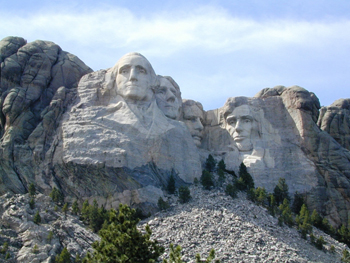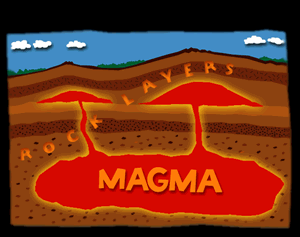Click on image for full size
Courtesy of Peter Nabelek, University of Missouri
Earth's Crust Melts Easier Than Thought
News story originally written on March 18, 2009
Melting rocks doesn’t sound like an easy job. It usually takes the scorching heat found in the Earth’s interior to make it happen. But now scientists have discovered that Earth's crust melts more easily than they thought.
Geologists found that as rocks get hotter in Earth's crust, they become better insulators and poorer conductors. That means they hold onto heat and don’t easily transfer it to nearby rocks. This research is helping scientists understand a bit more about how rocks melt as plate tectonics causes continents to collide and mountains to form.
Usually, the rocks of the Earth’s crust melt when they come in contact with hot molten magma from deep in the mantle. But geologists know that crust rocks are able to melt without the help of magma from the mantle - they melt when continents collide and mountains are built too. Could the temperatures in the crust get hot enough for rocks to melt where continents are slowly smashing into each other?
To test this, the scientists heated different types of rocks with lasers. They measured how long it took heat to conduct through different types of rock. The scientists noticed that as the heat was increased, the rocks lost some of their ability to conduct. They found that rocks heat up more efficiently than they thought.
In places where continents are colliding and mountains are forming, the strain heats the rocks. These experiments suggest that once rocks get heated, they stay hotter for much longer. It takes millions of years to happen, so scientists simulate the process with computer models.
"We applied our findings to computer models that predict what happens to rocks when they get buried and heat up in mountain belts, such as the Himalayas today or the Black Hills in South Dakota in the geologic past,” says geologist Alan Whittington.















